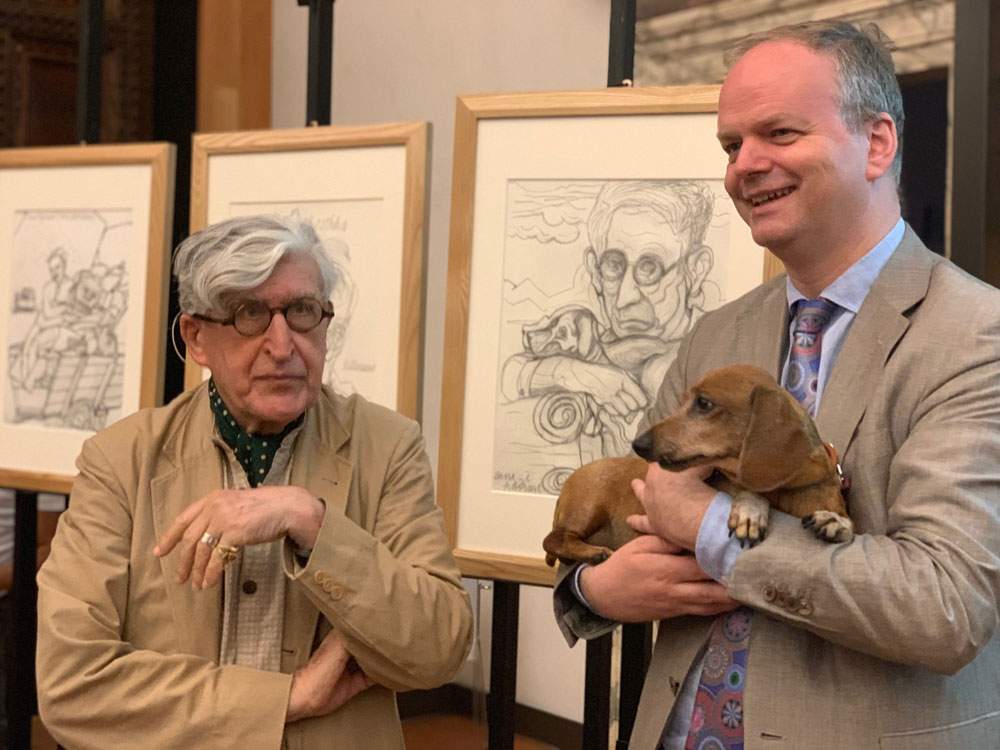Artist Valerio Adami (Bologna, 1935) has donated four of his drawings to the Uffizi Galleries, which enrich the Cabinet of Drawings and Prints.
Adami has always dealt with figuration; during his career he has exhibited in major international museums, from Moma in New York to the Centre Pompidou in Paris, and has been present at major contemporary art events, from Documenta Kassel to the Venice Biennale.
His artistic language has been described as neo-expressionist, realist, symbolic and pop, although the artist has always rejected the latter meaning. His drawings are characterized by the finite and closed form and through them he narrates the mystery of human life: from the myths of the past to the everyday. Recurrent in his style is the use of a chromatic matter in flat, smooth and continuous drafts within the sharp black fences of the drawing.
The four donated drawings represent a kind of portrait of Adami himself: two recent ones, with free and fluid strokes; a 2018 self-portrait with his inseparable dachshund Ego; a 2019 portrait of Oskar Kokoschka, whom he met in his youth in Venice; and two drawings, one of which is developed horizontally, in his more usual style, from which two famous paintings, The New Argonauts (2009) and Bitter Sweet (Landscape) (2001), were born.
“I have always been a museum-goer. To become part of such a unique and important collection is a great honor for me,” said the artist.
“The artist’s generous donation enhances two fields in which the Uffizi continues to enrich its collections with contemporary works, both those of drawings and self-portraits. Today we add one of Italy’s leading artistic voices to the chorus of masters in the Uffizi,” added the director of the Uffizi Galleries, Eike Schmidt.
 |
| Valerio Adami donates four of his drawings to the Uffizi. |
Warning: the translation into English of the original Italian article was created using automatic tools. We undertake to review all articles, but we do not guarantee the total absence of inaccuracies in the translation due to the program. You can find the original by clicking on the ITA button. If you find any mistake,please contact us.